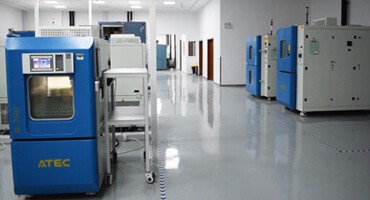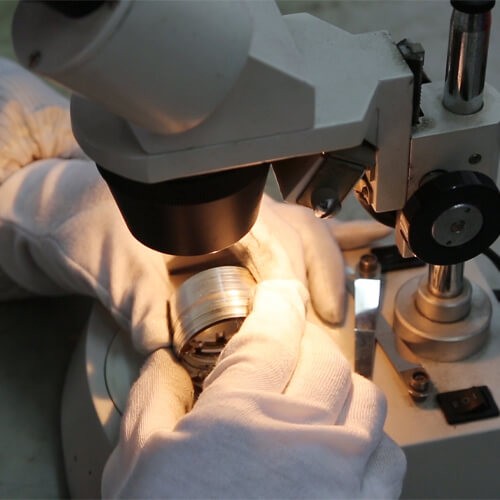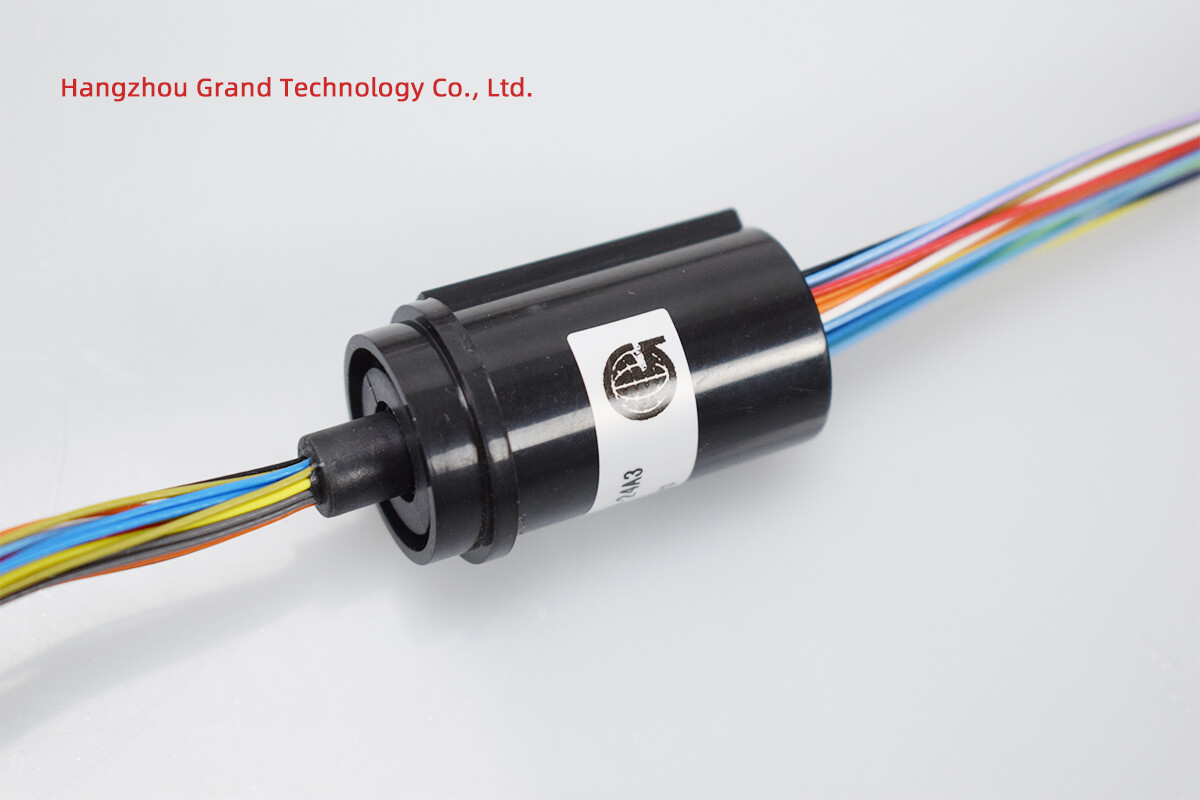With the ever-increasing reliance on electric motors across a broad spectrum of industries and applications, the demand for in-depth knowledge of rotors and their impacts on motor performance has also risen. Wound rotors and squirrel cage rotors represent the two primary types of rotors found in induction motors. It’s crucial for engineers, technicians, and other stakeholders in the realm of motor systems to acquire a solid understanding of these rotor types, their respective benefits, drawbacks, and applications.
Empowering readers with extensive knowledge of wound rotors and squirrel cage rotors allows them to make highly informed decisions based on their particular requirements. The context of acquiring a comprehensive knowledge of wound rotors and squirrel cage rotors serves as a stepping stone to better decision-making, financial savings, and enhanced motor performance. This information bank fosters an environment where informed decisions are the norm, ensuring that stakeholders can fulfill the unique requirements of their motor systems efficiently and cost-effectively.
Understanding Wound Rotor
Wound rotors, also known as slip ring rotors, hold a significant position in the induction motor landscape. This section aims to provide a comprehensive understanding of wound rotors, including their definition, design, functionality, durability, construction, industrial applications, and advantages and drawbacks.
* Definition of Wound Rotors
Wound Rotors: Wound rotors are a type of rotor used in induction motors, characterized by rotors wound with insulated wire, which enables variable speed control and high starting torque. The rotor windings are connected to the motor’s stator via slip rings and brushes that transfer electrical energy.

* Detailed Explanation of Wound Rotor: Design, Functionality, Durability, and Construction
Design: A wound rotor’s design is more complex than that of a squirrel cage rotor. The rotor features three-phase windings spaced evenly at 120 degrees apart, connected to slip rings mounted on the rotor shaft. Brushes are in contact with these slip rings, providing an external connection for delivering electricity to the wound rotor.
Functionality: The wound rotor functions by altering the resistance in the rotor circuit, allowing speed and torque control. An external resistance can be added via the slip ring and brush mechanism, which enables the motor to adapt to varying load requirements and facilitates smooth starting with high torque.
Durability: The wound rotor is inherently less durable than the squirrel cage rotor due to the presence of slip rings and brushes which are subject to wear and tear. Regular maintenance and replacement of these components are essential to ensure optimal motor performance and extend the life of the wound rotor.
Construction: Wound rotor construction comprises laminated iron cores and insulated conductor wires, which form the individual windings evenly arranged around the rotor. Copper or aluminum conductors are common choices for winding materials due to their excellent conductivity.
* Common Uses and Applications of Wound Rotor in Various Industries
Wound rotors are deployed in a variety of applications that demand high starting torque and control over motor speed. Industries and applications include:
- Heavy Machinery: Large conveyor belts, mills, crushers, winches, and hoists benefit from the high starting torque provided by wound rotors.
- Pumps and Compressors: Speed control and high torque make wound rotors ideal for pumps and compressors, particularly those used for fluid handling in the oil and gas or water treatment industries.
- Power Generation: In applications like hydroelectric generators or wind turbines, the ability to control torque and speed yields better energy efficiency.
* Advantages, Drawbacks, and Potential Challenges of Wound Rotors
Advantages:
- High Starting Torque: Wound rotors enable high starting torque, minimizing mechanical strain in high-load applications.
- Speed Control: The rotor’s design allows for precise speed control, ensuring smooth operation and adaptation to variable load conditions.
Drawbacks:
- Complexity: The presence of slip rings and brushes adds complexity, making wound rotors more challenging to design and manufacture.
- Maintenance: Due to the wear and tear associated with slip rings and brushes, wound rotors can demand higher maintenance efforts and costs.
Potential Challenges:
- Risk of Brush Arcing: At high speeds, brush arcing can occur, causing inefficiency, irregular motor operation, and potential damage.
In conclusion, understanding the wound rotor’s design, functionality, durability, and construction is pivotal for its appropriate selection, application, and efficient maintenance. Wound rotors offer specific advantages and drawbacks that make them suitable for certain industries and applications. Recognizing these characteristics allows stakeholders to make informed decisions and optimize their motor system performance.
Understanding Squirrel Cage Rotor
Squirrel cage rotors are the most common type of rotor found in induction motors, favored for their simplicity and low maintenance. This section delves into a better understanding of squirrel cage rotors, covering their definition, design, functionality, longevity, construction, applications across sectors, and benefits and limitations.
* Definition of Squirrel Cage Rotors
Squirrel Cage Rotors: Named after their resemblance to a rodent exercise wheel, squirrel cage rotors consist of shorted conducting bars arranged in a laminated iron core. They lack windings, brushes, or slip rings, resulting in simpler construction and reduced maintenance compared to wound rotors. Electromagnetic induction between the stator’s alternating magnetic field and the rotor windings generates torque to drive the motor.

* Comprehensive Discussion of Squirrel Cage Rotor: Design, Functionality, Longevity, and Construction
Design: Squirrel cage rotors showcase a simple design, with rotor bars arranged in a laminated core, shorted on both ends by conductive rings. The cage-like structure is mounted on the motor’s shaft.
Functionality: Torque production in squirrel cage rotors occurs through electromagnetic induction, involving the interaction between the stator’s magnetic field and the rotor. As the stator field rotates, it induces a rotor current, creating a secondary magnetic field that produces a force and drives the motor.
Longevity: The absence of windings, brushes, and slip rings in squirrel cage rotors makes them notably more robust and less prone to wear and tear than their wound rotor counterparts. This inherent simplicity translates to longer life expectancy and reduced maintenance efforts.
Construction: The construction of squirrel cage rotors involves an iron core made of laminated sheets, as well as conducting bars and end rings, typically composed of aluminum or copper. The laminated core minimizes power loss due to eddy currents and hysteresis, while the shorted conductor bars facilitate the rotor’s responsiveness to the stator’s magnetic field.
* Range of Uses and Applications of Squirrel Cage Rotor in Several Sectors
Squirrel cage rotors are widely employed across a variety of industries and applications, particularly where constant speed and low maintenance requirements are paramount. Examples of sectors and applications include:
- HVAC Systems: Heating, ventilation, and air conditioning systems utilize squirrel cage rotors for their constant-speed fan and blower motors.
- Pumps: Many constant-speed pumps, such as those found in swimming pools or simple fluid transfer systems, take advantage of the low-maintenance operation provided by squirrel cage rotors.
- Appliances: Household and commercial appliances like washing machines, dryers, and refrigerators commonly feature squirrel cage rotors due to their simplicity and durability.
* Benefits, Limitations, and Potential Difficulties of Squirrel Cage Rotors
Benefits:
- Simple Design: The absence of windings, brushes, and slip rings makes squirrel cage rotors easy to build and less prone to failure.
- Low Maintenance: Due to their reduced wear and tear, squirrel cage rotors require minimal maintenance, lowering costs and increasing system uptime.
Limitations:
- Limited Speed Control: Squirrel cage rotors lack the external resistances and adaptability found in wound rotors, resulting in minimal control over speed and torque.
- Lower Starting Torque: Compared to wound rotors, squirrel cage rotors have a lower starting torque, which can be a limitation in certain high-load applications.
Potential Difficulties:
- Suboptimal Efficiency at Reduced Speed: Although squirrel cage rotors excel at constant-speed operations, they may exhibit reduced efficiency when operating at lower speeds.
In summary, understanding squirrel cage rotors—including their design, functionality, longevity, and construction—is essential for making well-informed decisions in motor system selection, deployment, and maintenance. Squirrel cage rotors bring specific benefits and limitations, which make them apt for particular industries and applications. Through deep comprehension of these characteristics, decision-makers can optimize motor system performance and cater to the unique needs of their chosen applications.
Key Differences between Wound Rotor and Squirrel Cage
In the realm of induction motors, the two primary types of rotors are the wound rotor and the squirrel cage rotor. Understanding the key differences between these types are crucial for making informed decisions in the design, implementation, and maintenance of motor systems. This section concentrates on highlighting these differences, taking into account aspects such as design, functionality, energy efficiency, and maintenance requirements. We will dive into the contrast of their optimal operational environments and provide a graphic comparison chart for a visual perspective.

* Significance of Understanding the Difference Between the Two Types of Rotors
The choice of the rotor type directly influences the motor’s performance regarding speed control, starting torque, energy efficiency, and maintenance requirements. These factors dictate the motor’s suitability for specific applications. Therefore, understanding the difference between the wound rotor and the squirrel cage rotor is essential to ensure optimized performance, longevity, and reliability of the given motor system.
* Contrast and Comparison of Wound Rotor and Squirrel Cage Rotor
Design: The wound rotor design features a set of windings linked via slip rings and brushes to the stator, enabling speed control. Conversely, squirrel cage rotors display a straightforward design with conducting bars shorted at each end, creating a cage-like structure that significantly simplifies the construction.
Functionality: Wound rotors’ functionality relies on the ability to modify the resistance in the rotor circuit, allowing for speed and torque control. This feature is absent in squirrel cage rotors, which operate at nearly constant speeds.
Energy Efficiency: Both rotor types present comparable energy efficiency during continuous operation — the significant differences arise during startup and variable speed conditions. Wound rotors can efficiently manage high starting torque and speed control, while squirrel cage rotors show reduced efficiency under lower speeds.
Maintenance Requirements: Wound rotors require higher maintenance due to the wear and tear of slip rings and brushes. In contrast, squirrel cage rotors, with their simpler design, require minimal maintenance.
* Differences in Their Operational Environments (i.e., Where Each is Optimally Applied)
Wound Rotor: The wound rotor’s ability to handle high startup torques and control speed makes it ideal for industrial machinery like conveyor belts, mills, crushers, and generators where load conditions may vary widely.
Squirrel Cage Rotor: Squirrel cage rotors are preferred in situations demanding constant speed and minimal maintenance. They are often used in HVAC systems, household appliances, and most small to medium-sized motors.
* A Graphical Comparison Chart
Unfortunately, as a text-based model, I am unable to create graphical content. However, below is a representation in text form of how you might structure a graphical comparison chart:
| Feature/Attribute | Wound Rotor | Squirrel Cage Rotor |
|---|---|---|
| Design | Complex, with windings, slip rings, and brushes | Simple, with shorted conducting bars |
| Functionality | Variable speed and torque control | Primarily constant speed |
| Energy Efficiency | Optimized for high starting torque and varying loads | High efficiency at a constant speed |
| Maintenance | High maintenance (slip rings, brushes) | Low maintenance |
| Operational Environment | Heavy machinery, pumps, generators | HVAC systems, appliances, small to medium motors |
In summation, the understanding of the differences between wound rotors and squirrel cage rotors equips decision-makers with the knowledge necessary for optimal motor system planning, execution, and maintenance, leading to improved system performance and cost-effective operation.
Wound Rotor and Squirrel Cage: Cost Implications
In conjunction with performance and application suitability, one of the most crucial aspects of the decision-making process when choosing a rotor type revolves around cost implications. It’s not only about initial purchasing expenses but also operational costs, including energy consumption and maintenance. This section seeks to provide an overview of the financial aspects linked to wound rotors and squirrel cage rotors and analyze their cost-effectiveness concerning performance and maintenance needs.
* Overview of the Financial Considerations Between Wound Rotor and Squirrel Cage Rotor
Initial Costs: Typically, squirrel cage rotors are more economical regarding initial investment due to their simple design and manufacturing process. In contrast, wound rotors have a more complex structure, including windings, slip rings, and brushes, making their initial purchase cost generally higher.
Operational Costs: The operational costs primarily comprise energy consumption and maintenance. Squirrel cage rotors, being designed for constant speed operations, are highly energy efficient under these conditions, thus potentially leading to lower energy costs. Wound rotors, while also efficient, excel in variable load conditions, which may lead to higher energy consumption when not properly managed.
Maintenance Costs: Maintenance can significantly impact the total cost of ownership. Wound rotors require careful and regular maintenance due to their inherent wear-prone components like slip rings and brushes, while squirrel cage rotors, with a simpler design and construction, are less demanding in terms of maintenance.
* Analysis of Cost-effectiveness in Relation to Performance and Maintenance Needs
Determining the cost-effectiveness of either a wound rotor or a squirrel cage rotor cannot be isolated from their performance in a given application and their respective maintenance needs.
Wound Rotor: Although they come with a higher initial investment, wound rotors offer a greater degree of control over speed and torque. They thrive in applications with varied load demands and high starting torques, justifying the higher upfront and maintenance costs. However, without good motor management, operational expenses may mount due to possible increased energy consumption and maintenance needs.
Squirrel Cage Rotor: Despite being cost-effective concerning initial purchase and generally offering lower operational and maintenance costs, squirrel cage rotors do have some limitations. With a lack of speed control and lower starting torque, they might not suit applications where variable motor output is critical. Yet, in situations requiring constant speed and lower maintenance, these rotors provide excellent long-term value.
In summary, understanding how performance, maintenance, and initial and operational costs interlink is key to making the most cost-effective decisions between a wound rotor and a squirrel cage rotor. A careful analysis of the expected load conditions and operational requirements can help optimize the balance between cost and performance, leading to a more efficient and economical motor operation.
Wound Rotor and Squirrel Cage: Decision Factors
When selecting between wound rotor and squirrel cage rotor for a particular motor application, several decision factors come into play. It’s crucial to weigh in factors such as application requirements, speed control, energy efficiency, maintenance, and costs before finalizing a decision. This section outlines essential factors to consider and presents professional recommendations on various scenarios ideally suited for each rotor type.
* Crucial Factors to Consider Before Choosing Either Rotor Type
- Application Requirements: Evaluate the specific requirements of the intended application, including torque and speed demands, as well as the versatility required at different load conditions.
- Speed Control: Determine whether speed control is necessary, as this may be a decisive factor: wound rotors are preferable for variable speed control, while squirrel cage rotors are designed for constant speed.
- Energy Efficiency: Assess the importance of energy efficiency in your application. Consider the conditions under which each rotor type excels in terms of performance and energy consumption.
- Maintenance: Consider the resources and time you’re willing to allocate for regular maintenance. Wound rotors require more frequent and potentially costly maintenance, whereas squirrel cage rotors demand minimal upkeep.
- Cost and Budget: Evaluate the initial costs and the long-term expenses arising from maintenance and energy consumption. Balance these costs with the desired level of performance and efficiency.
* Professional Recommendations on Scenarios Best Suited for Wound Rotor or Squirrel Cage Rotor
Wound Rotor – Best Suited Scenarios:
- High Starting Torque Demands: Applications requiring high startup torque, such as conveyor systems, mills, and crushers, will benefit from the capabilities of a wound rotor.
- Variable Load Conditions: Wound rotors provide a high level of control, making them ideal for operations dealing with varying load conditions, such as pumps and generators handling intermittent demand.
- Speed Control Flexibility: Flexibly controlling a motor’s speed is vital for some applications like crane control, elevators, or mixer drives. Wound rotors can be advantageous in these cases.
Squirrel Cage Rotor – Best Suited Scenarios:
- Constant Speed Demand: Squirrel cage rotors excel at constant speed operations, making them perfect for HVAC systems, refrigeration units, and household appliances.
- Low Maintenance Requirements: Industries or applications that prioritize minimal maintenance and high reliability will benefit from squirrel cage rotors, such as lighting systems and small to medium electrical drives.
- Budget Constraints: When initial costs and budgetary restrictions are significant concerns, squirrel cage rotors offer an economical alternative, both in purchasing and lower maintenance expenses.
In conclusion, it is essential to consider various decision factors before choosing between a wound rotor and a squirrel cage rotor. These factors affect the motor’s performance and efficiency, making their proper evaluation critical for optimized system planning and execution. By aligning the rotor type with specific application requirements and performance expectations, a tailored motor system solution can be achieved, ultimately enhancing overall operational efficiency and reliability.
Conclusion
To summarize, both wound rotors and squirrel cage rotors serve unique purposes with distinct capabilities. The decision between the two should hinge on your specific requirements, budget considerations, and maintenance preferences. As rotor technologies continue to evolve, staying informed is the key to making the right choice and harnessing efficiency in your motor operations.
FAQs about Wound Rotor and Squirrel Cage
Both wound rotors and squirrel cage rotors are critical components of induction motors with their unique advantages and drawbacks. As they are fundamental to guiding the choice of motor systems, users often have many questions about these rotor types. This section aims to answer common queries related to wound rotors and squirrel cage rotors, clarify misconceptions, and provide an understanding of complex aspects associated with each rotor type.
* Answers to Common Queries Related to Wound Rotors and Squirrel Cage Rotors
Q: What is the primary difference between a wound rotor and a squirrel cage rotor?
A: Wound rotors consist of rotor windings, slip rings, and brushes, allowing variable speed and torque control. On the other hand, squirrel cage rotors have shorted conducting bars at both ends, requiring less maintenance and primarily operating at constant speeds.
Q: Where are wound rotors generally used?
A: Wound rotors are commonly used in applications requiring high startup torque or variable speed control such as conveyor belts, elevators, and cranes due to their ability to handle varying load conditions.
Q: Are all induction motors squirrel cage type?
A: No, induction motors can have either a squirrel cage rotor or a wound rotor. However, squirrel cage rotors are most common due to their simplicity, low cost, and robustness.
Q: Which rotor type is more energy efficient?
A: Both rotor types are comparably energy efficient, but their efficiency is best realized under different conditions. Wound rotors perform efficiently under variable load conditions, while squirrel cage rotors are more energy-efficient at constant speeds.
Q: Why is maintenance significant for wound rotors?
A: Wound rotors involve components such as slip rings and brushes which undergo wear and tear over time and hence require regular maintenance.
* Clarifications to Misconceptions and Complex Aspects Related to Both Rotors
Misconception – Wound rotors are outdated and inefficient: Although wound rotors have been around for a long time, they are not outdated. They offer variable speed control and high starting torque that squirrel cage rotors just can’t match, making them ideal in certain applications.
Misconception – Squirrel cage rotors can’t handle high load applications: Although squirrel cage rotors do not provide variable speed control like wound rotors, they can indeed handle high loads under constant operating speed.
Complex Aspect – Speed Control: Understanding speed control can be intricate. Simply put, squirrel cage rotors generally operate at constant speeds close to the synchronizing speed. On the other hand, wound rotors, through external resistance adjustments in the rotor circuit, can control both speed and torque efficiently.
Complex Aspect – Energy Efficiency: Energy efficiency can be a confusing aspect, as it primarily depends on application requirements. Day-to-day operation under constant loads favors squirrel cage rotors, while variable load conditions can be managed more efficiently by wound rotors.
In conclusion, obtaining a comprehensive understanding of the contrasts between wound rotor and squirrel cage rotor allows for improved decision-making when choosing the suitable rotor type for a given task. It’s always important to consider the nature of the application, performance requirements, maintenance needs, and the total cost, rather than relying solely on misconceptions or oversimplifications.
See What We Can Do

